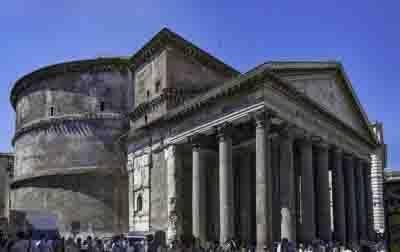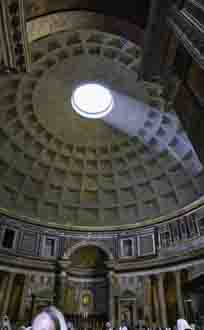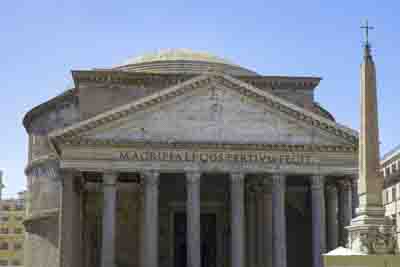Pantheon, Rome
| The Pantheon in Rome, originally built as a temple to the gods around 27 BCE and later rebuilt by Emperor Hadrian around 126 AD, is renowned for its massive dome and oculus. This architectural marvel exemplifies Roman engineering with its perfect proportions and harmonious design. The Pantheon has served various purposes over the centuries and remains one of the best-preserved ancient buildings, attracting millions of visitors each year. |
| The Oculus of the Pantheon in Rome is a central circular opening at the top of the dome, measuring 8.2 meters in diameter. It serves as the primary source of light, symbolizing the connection between the temple and the heavens. Ingeniously designed, the oculus allows rainwater to drain through a slightly convex floor, showcasing Roman engineering and architectural brilliance. |
Front, with Ancient Egyptian Obelisk (1303-1213 BCE)
| The Pantheon Obelisk, originally from Heliopolis, Egypt, was brought to Rome by Emperor Hadrian around 120 AD. Standing 6.34 meters tall, it was later erected in front of the Pantheon in 1711 by Pope Clement XI. This obelisk symbolizes the connection between ancient Egypt and Rome, showcasing the cultural exchange of the era. The obelisk was originally carved during Egyptian pharaoh Ramesses II's reign (c. 1303-1213 BCE)—a structure with the earliest date among all those shown on this "Panoramic Photos" web site. |
| |



